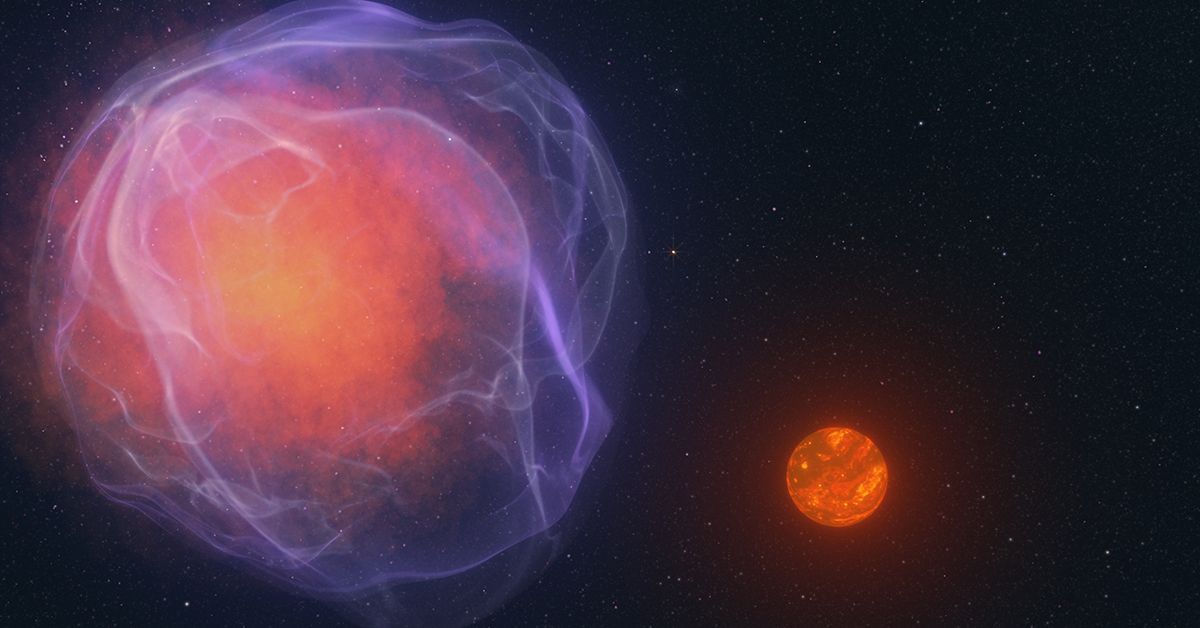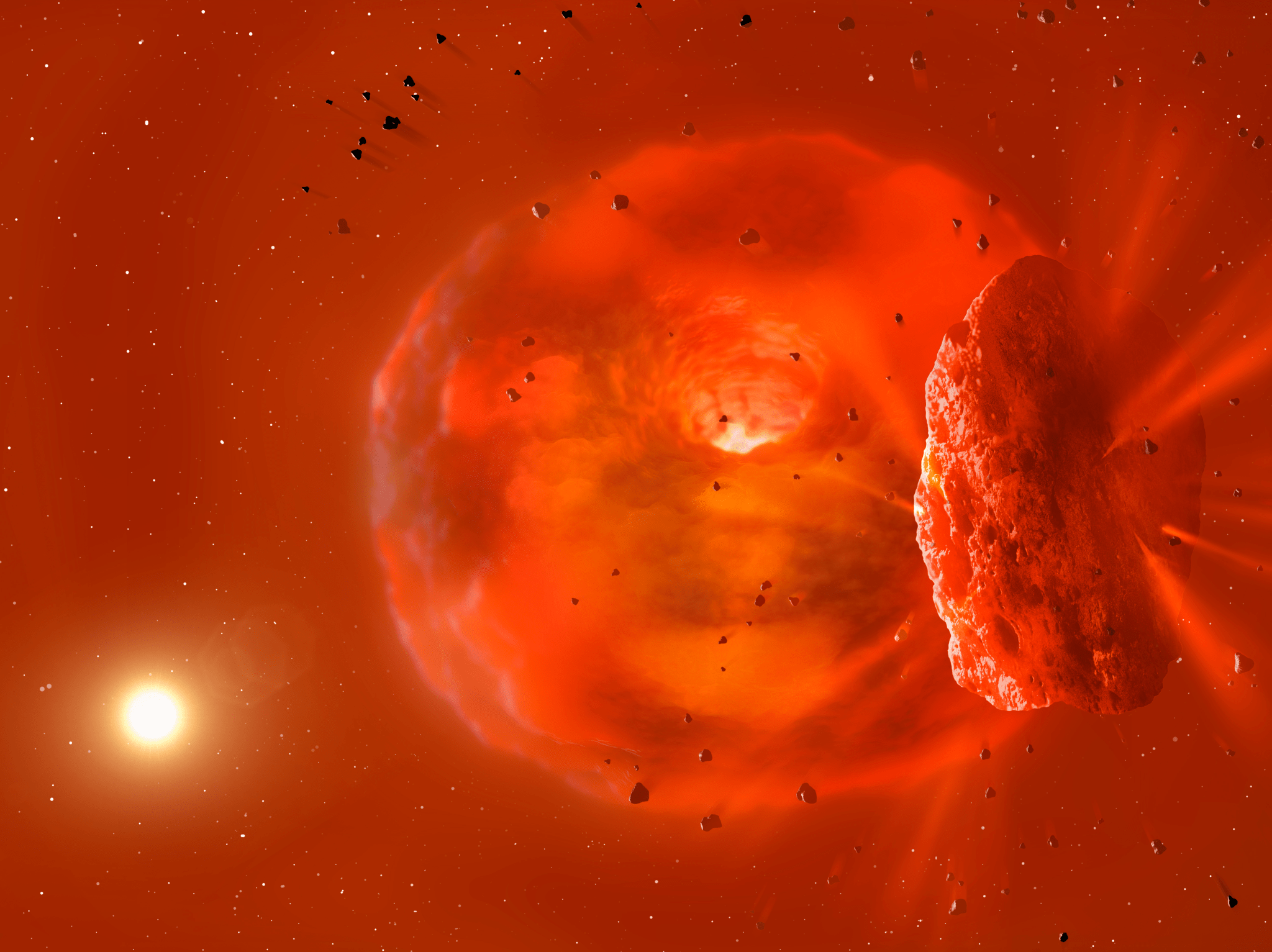4 min read NASA Citizen Scientists Spot Object Moving 1 Million Miles Per Hour This artist’s concept shows a hypothetical white dwarf, left, that has exploded as a supernova. The object at right is CWISE J1249, a star or brown dwarf ejected from this system as a result of the explosion. This scenario is one explanation for where CWISE J1249 came from. W.M. Keck Observatory/Adam Makarenko Most familiar stars peacefully orbit the center of the Milky Way. But citizen scientists working on NASA’s Backyard Worlds: Planet 9 project have helped discover…
Read MoreTag: WISE (Wide-field Infrared Survey Explorer)
Discovery Alert: Glowing Cloud Points to a Cosmic Collision
3 min read Discovery Alert: Glowing Cloud Points to a Cosmic Collision This illustration depicts the aftermath of a collision between two giant exoplanets. What remains is a hot, molten planetary core and a swirling, glowing cloud of dust and debris. Mark A. Garlick The Discovery: A glowing cosmic cloud has revealed a cataclysmic collision. Key Facts: Even within our own solar system, scientists have seen evidence of giant, planetary collisions from long ago. Remaining clues like Uranus’ tilt and the existence of Earth’s moon point to times in our…
Read MoreMeet the Infrared Telescopes That Paved the Way for NASA’s Webb
Scientists have been studying the universe with infrared space telescopes for 40 years, including these NASA missions, from left: the Infrared Astronomical Satellite (IRAS), launched in 1983; the Spitzer Space Telescope, launched in 2003; and the James Webb Space Telescope, launched in 2021. NASA/JPL-Caltech The Webb telescope has opened a new window onto the universe, but it builds on missions going back 40 years, including Spitzer and the Infrared Astronomical Satellite. On Dec. 25, NASA will celebrate the two-year launch anniversary of the James Webb Space Telescope – the largest…
Read MoreNASA’s NEOWISE Celebrates 10 Years, Plans End of Mission
NEOWISE is depicted in an artist’s concept in front of an image of the infrared sky that the mission captured. The string of red dots moving across the sky near the center of the image is Holda, the first asteroid the space telescope detected shortly after being reactivated in 2013. NASA/JPL-Caltech The asteroid and comet-hunting infrared space telescope has gathered an impressive haul of observations, but it’s now at the mercy of the Sun, which is accelerating its demise. NASA’s NEOWISE has had a busy decade. Since its reactivated mission…
Read More
